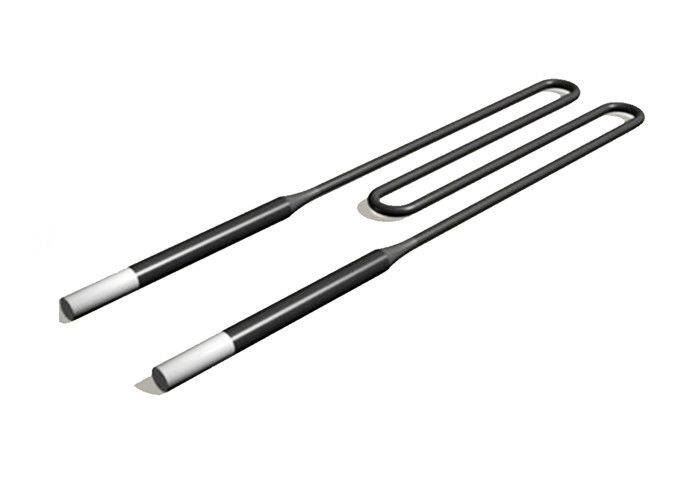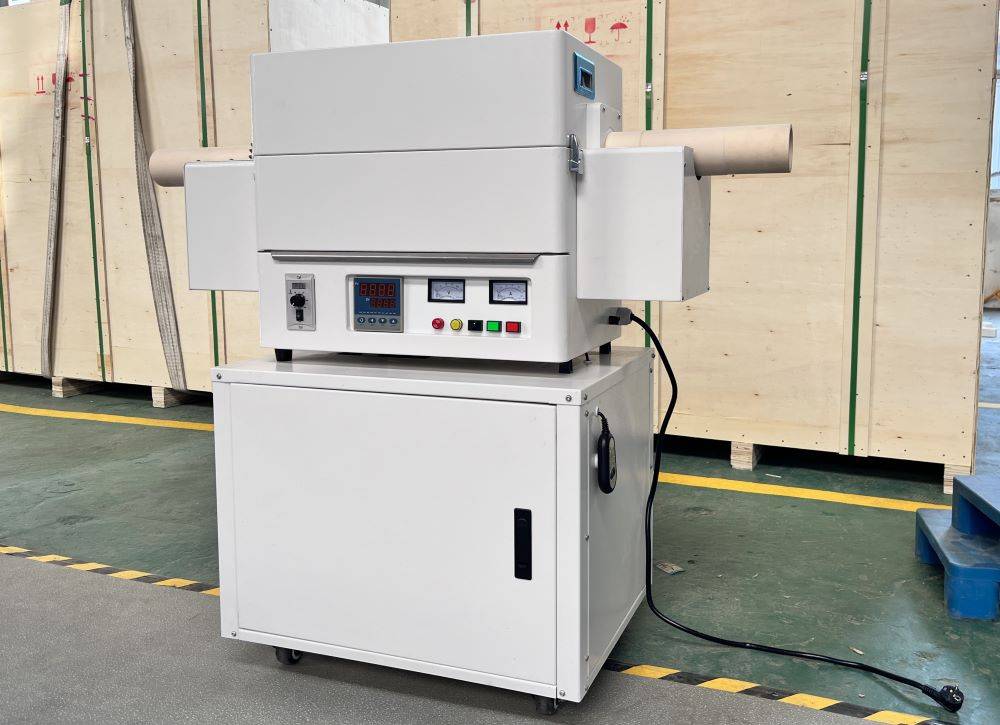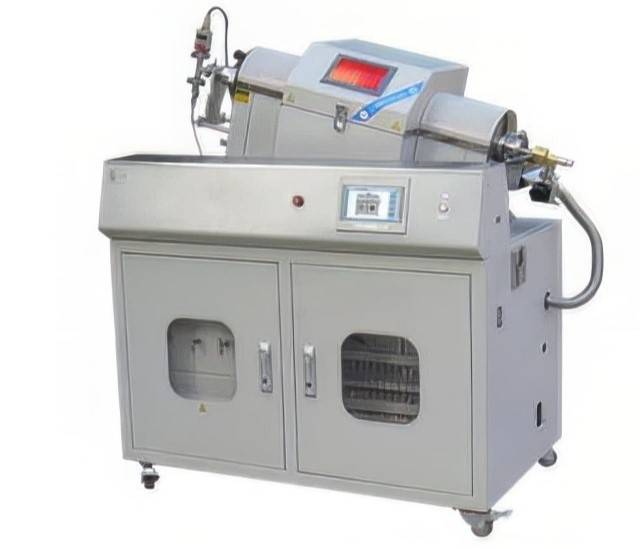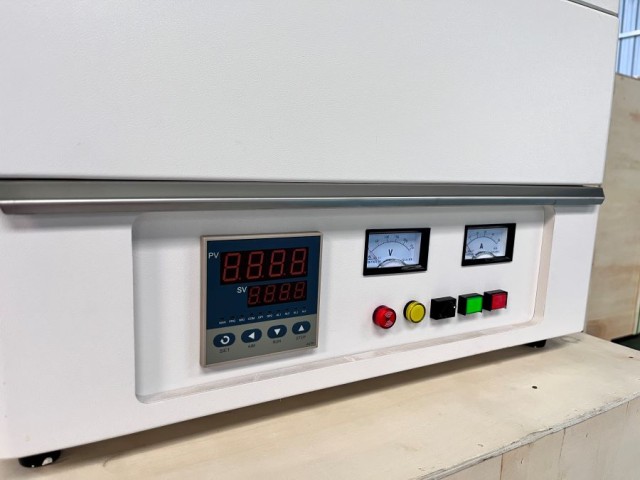Temperature Considerations
Maximum and Continuous Operating Temperature
When selecting a heating furnace for your laboratory experiments, it is crucial to consider the temperature range that best suits your needs. Specifically, you should focus on both the maximum temperature the furnace can achieve and the temperature at which it can operate continuously.
Maximum Temperature
The maximum temperature refers to the peak heat level the furnace can reach, typically maintained for short durations (less than an hour). This is particularly important for experiments requiring high-temperature processing or for materials that need to undergo rapid temperature changes. For instance, if your experiment involves sintering advanced ceramics, you may need a furnace capable of reaching temperatures up to 1800°C.
Continuous Operating Temperature
On the other hand, the continuous operating temperature indicates the stable heat level the furnace can maintain over extended periods. This is essential for experiments that require long-term heat treatment, such as annealing metals or conducting high-temperature studies on polymers. For example, if your research involves continuous processing of semiconductor materials, you might need a furnace that can operate steadily at 1200°C for several hours.
Considerations
When choosing a furnace, ensure that its temperature capabilities align with your experimental requirements. A mismatch could lead to incomplete or compromised results. For instance, using a furnace with a lower continuous operating temperature than required could result in insufficient heat treatment, while exceeding the maximum temperature limit could damage the furnace or the samples.
By carefully evaluating these temperature parameters, you can select a heating furnace that not only meets your current needs but also ensures the reliability and accuracy of your experimental outcomes.
Heating Element Types
The heating element used in a tube furnace significantly influences the maximum operating temperature of the heater. These elements can be broadly classified into four primary types, each offering distinct temperature ranges and applications.
-
Fe-Cr-Al or Ni-Cr-Al Alloy: This type of heating element is commonly used in applications requiring temperatures between 250°C and 1250°C. The alloy's high resistance to oxidation makes it ideal for prolonged use in various industrial and laboratory settings.
-
Silicon Carbide: Operating within the range of 1300°C to 1600°C, silicon carbide elements are known for their durability and efficiency. They are often employed in high-temperature applications where consistent heat output is crucial.
-
MoSi2 (Molybdenum Disilicide): With a temperature range of 1600°C to 1800°C, MoSi2 elements are designed for the most demanding high-temperature environments. Their ability to withstand extreme conditions makes them suitable for specialized applications in materials research and high-temperature processing.
-
Others: This category includes various specialized heating elements that may not fit into the above three types but are nonetheless essential for specific applications. These could include composite materials or unique designs tailored for particular experimental needs.
Each type of heating element has its own set of advantages and limitations, making them suitable for different laboratory and industrial applications. The choice of heating element should align with the specific temperature requirements and operational conditions of the intended use.

Sample Size and Crucible Selection
Crucible Material and Temperature Limits
When selecting a crucible for your laboratory experiments, it is crucial to consider the heat treatment temperature of your sample. Different materials have varying temperature limits, and choosing the wrong one can lead to dangerous failures or compromised experimental results.
- Quartz Crucibles: Ideal for applications requiring temperatures up to 1200°C. Quartz is a popular choice due to its transparency, which allows for visual monitoring of the process.
- Alumina Crucibles: Suitable for temperatures up to 1800°C. Alumina offers excellent thermal shock resistance and is often used in high-temperature applications involving metal alloys.
- Graphite Crucibles: Capable of withstanding temperatures up to 2300°C. Graphite crucibles are known for their high thermal conductivity and non-wettability, making them ideal for foundry applications where rapid temperature changes are common.
In addition to the maximum temperature limits, the rate of temperature change is also a critical factor. Crucibles must be able to handle rapid heating and cooling cycles without suffering from thermal shock. For instance, the high carbon content in graphite crucibles provides superior thermal conductivity and shock resistance, which is essential in environments where temperatures can fluctuate by several hundred degrees in seconds.
| Crucible Material | Temperature Limit | Thermal Shock Resistance |
|---|---|---|
| Quartz | ≤1200°C | Moderate |
| Alumina | ≤1800°C | High |
| Graphite | ≤2300°C | Very High |
Always consult with your crucible supplier to ensure that the selected material provides the best resistance to thermal shock for your specific application. Operating a crucible above its maximum temperature limit can result in catastrophic failure, while operating below its lower limit can lead to oxidation and other issues, particularly with materials designed for high-temperature melting.

Furnace Tube Diameter
After selecting the crucible, it is crucial to choose a furnace tube diameter that accommodates both the crucible and the sample effectively. The diameter of the furnace tube directly influences the heating efficiency and the uniformity of the temperature distribution within the sample.
Common options for furnace tubes include:
-
Quartz Tubes: Ideal for temperatures up to 1200°C, quartz tubes offer excellent transparency, allowing for visual monitoring of the heating process. They are particularly suitable for experiments requiring high purity environments due to their resistance to chemical reactions.
-
Stainless Steel Tubes: Capable of withstanding temperatures up to 1000°C, stainless steel tubes are robust and durable. They are often preferred for their mechanical strength and resistance to thermal shock, making them suitable for high-stress laboratory environments.
| Tube Material | Temperature Limit | Key Advantages |
|---|---|---|
| Quartz | ≤1200°C | Transparency, High Purity |
| Stainless Steel | ≤1000°C | Mechanical Strength, Thermal Resistance |
Selecting the appropriate tube material and diameter ensures that the furnace can handle the thermal demands of the experiment while maintaining the integrity and safety of the setup.
Temperature Zone Selection
Single vs. Multi-Temperature Zone Furnaces
When selecting a tube furnace for your laboratory, one of the critical decisions is whether to opt for a single temperature zone or a multi-temperature zone furnace. This choice hinges heavily on the specific requirements of your experiments.
Single Temperature Zone Furnaces are ideal for experiments that require a uniform and consistent temperature across the entire heating chamber. These furnaces are simpler in design, making them more cost-effective and easier to operate. They are particularly suitable for processes where maintaining a constant temperature is paramount, such as in annealing or sintering applications.
Multi-Temperature Zone Furnaces, on the other hand, offer greater flexibility and control. These furnaces are equipped with multiple thermocouples strategically placed along the length of the heating chamber. This configuration allows for distinct temperature zones within a single furnace, enabling simultaneous heating at different temperatures. This feature is invaluable for experiments that require gradient heating or varying temperature profiles, such as in materials research or certain types of chemical reactions.
| Feature | Single Temperature Zone Furnace | Multi-Temperature Zone Furnace |
|---|---|---|
| Temperature Control | Uniform across the chamber | Variable zones |
| Ideal for | Consistent temperature processes | Gradient heating or varying temperature profiles |
| Operational Complexity | Simpler | More complex |
| Cost | Generally lower | Higher due to additional components |
In summary, while single temperature zone furnaces provide simplicity and cost-effectiveness, multi-temperature zone furnaces offer enhanced control and flexibility, making them the preferred choice for more complex experimental needs.

Role and Impact of Temperature Zones
The constant temperature zone within a tube furnace is crucial for maintaining uniform heating across the entire length of the sample. This uniformity is essential for ensuring consistent experimental results, especially in applications where precise temperature control is necessary. The thermostat zone, which is the area monitored by thermocouples, plays a significant role in this process. Any changes or adjustments in this zone can directly influence the furnace's operational parameters.
For instance, expanding the thermostat zone can lead to an increase in the furnace's overall length and size. This is because a larger thermostat zone requires additional space to accommodate the necessary thermocouples and heating elements. Conversely, a smaller thermostat zone might result in a more compact furnace design, which could be beneficial for laboratories with limited space.
| Aspect | Impact |
|---|---|
| Uniform Heating | Ensures consistent experimental results by maintaining a steady temperature |
| Thermostat Zone Changes | Affects the furnace's size and length, requiring adjustments in design |
In summary, the temperature zones in a tube furnace are not just functional elements but critical components that dictate the furnace's design and performance. Their proper selection and configuration are essential for meeting specific experimental requirements and ensuring optimal results.
Function and Special Features
Basic and Advanced Heating Systems
When selecting a tube furnace for your laboratory, you have a spectrum of options ranging from basic models to highly sophisticated systems. Basic tube furnaces are ideal for straightforward heating tasks, offering reliable performance for general-purpose applications. These systems are typically straightforward in design, making them easy to operate and maintain.
On the other hand, advanced heating systems like Chemical Vapor Deposition (CVD), Plasma-Enhanced CVD (PECVD), High-Pressure CVD (HPCVD), Atomic Layer Deposition (ALD), and graphene growth systems are tailored for specialized needs. These advanced systems incorporate cutting-edge technology to facilitate complex chemical reactions, precise material deposition, and the growth of advanced materials like graphene.
| System Type | Applications | Key Features |
|---|---|---|
| Basic Tube Furnace | General heating, material processing, and basic chemical reactions. | Simple design, easy operation, and maintenance. |
| CVD | Thin film deposition, semiconductor manufacturing, and material synthesis. | Precise control over chemical reactions, high deposition rates. |
| PECVD | Low-temperature film deposition, dielectric film formation, and nanomaterials. | Utilizes plasma to enhance reaction rates, versatile for various materials. |
| HPCVD | High-pressure material synthesis, advanced coatings, and specialized films. | Operates under high pressure, suitable for unique material properties. |
| ALD | Ultra-thin film deposition, nanotechnology, and quantum dot fabrication. | Atomic-level precision, excellent film uniformity and conformality. |
| Graphene Growth | Graphene synthesis, advanced material research, and nanotechnology. | High-temperature processes, specialized for graphene production. |
Choosing between these systems depends on the specific requirements of your experiments. For instance, if your research involves the synthesis of advanced materials or the deposition of thin films with precise control, an advanced system like CVD or ALD would be more appropriate. Conversely, for general heating tasks, a basic tube furnace provides a cost-effective and reliable solution.
Vertical Tube Furnace and Rapid Thermal Processing
Vertical tube furnaces are designed to suspend samples, allowing for efficient quenching processes. This design is particularly advantageous in semiconductor manufacturing, where precise temperature control and rapid cooling are crucial for material integrity and performance. The vertical orientation ensures minimal particle generation, promoting a clean processing environment.
In contrast, Rapid Thermal Processing (RTP) furnaces excel in rapid heating and cooling cycles. These furnaces are engineered to achieve swift temperature transitions, which are essential for processes like annealing and film formation. The ability to heat and cool samples rapidly enables the creation of materials with specific thermal histories, enhancing their properties and performance.
| Feature | Vertical Tube Furnace | Rapid Thermal Processing (RTP) Furnace |
|---|---|---|
| Sample Orientation | Suspended vertically | Horizontal or custom orientation |
| Temperature Control | High precision, uniform distribution | Rapid heating and cooling cycles |
| Application | Semiconductor processing, material synthesis | Rapid annealing, film formation |
| Environment | Minimal particle generation | High-speed thermal transitions |
The choice between a vertical tube furnace and an RTP furnace depends on the specific requirements of the material processing task. For instance, if the goal is to maintain a clean processing environment with controlled quenching, a vertical tube furnace would be the preferred option. Conversely, for applications requiring rapid thermal cycles, an RTP furnace would be more suitable.
High Pressure/Vacuum and Rotary Tube Furnaces
Special designs such as high pressure/vacuum furnaces and rotary tube furnaces provide unique capabilities tailored for specific treatments and ensure uniform heat distribution. These furnaces are engineered to handle demanding conditions, offering advanced features that enhance both performance and precision.
Rotary Tube Furnaces
Rotary tube furnaces, utilizing high-purity quartz or alumina tubes, operate within a temperature range of 800°C to 1700°C. These furnaces are equipped with international advanced control systems, ensuring safety, reliability, and ease of operation. Key features include high precision temperature control, excellent heat insulation, and the ability to connect to vacuum atmospheres. These attributes make rotary tube furnaces ideal for various applications in academic institutions, research labs, and industrial settings, particularly for experimental work and small-scale production.
Vacuum Tube Furnaces
Vacuum tube furnaces, on the other hand, employ silicon carbide heating elements and feature a double shell structure with intelligent program control. These furnaces are designed to maintain high-vacuum conditions, which are crucial for certain experimental processes. The advanced control systems in these furnaces ensure precise temperature management and uniform heat distribution, making them suitable for a wide range of high-temperature applications.

Advanced Control and Multiple Atmospheres
One of the unique aspects of rotary furnaces is their capability to manage multiple atmospheres within a single tube. This advanced control eliminates the need for multiple unit operations, consolidating various requirements into one integrated system. This feature is particularly advantageous in complex experimental setups where maintaining different atmospheric conditions is essential.
Ultra High Temperature Processing
For ultra high temperature processing, these furnaces are designed to seal both the process atmosphere and the chamber atmosphere, allowing the use of specialty materials like graphite or refractory metals. These materials are necessary for very high temperature processing, typically exceeding 2000°C. A significant challenge in such high-temperature environments is the clamping and driving of the tube, especially when it is contained within the chamber atmosphere. Advanced designs address this by locating the tube holding and driving mechanisms externally, enabling tube expansion and minimizing torque transmission through the tube. This setup ensures continuous operation without compromising the seal integrity.
Special Gas Treatment
In addition to the standard features, some tube furnaces come equipped with advanced capabilities tailored for specific gas treatments. These specialized models are particularly useful for conducting research involving hydrogen treatment and high-temperature corrosion studies. The integration of these features ensures that the furnace can handle complex experimental conditions, providing a controlled environment for precise gas interactions.
For instance, the hydrogen treatment capability allows researchers to simulate and study the behavior of materials under hydrogen gas conditions, which is crucial for applications in the semiconductor and metallurgical industries. Similarly, the high-temperature corrosion studies enable the examination of materials' resistance to corrosive gases at elevated temperatures, which is essential for ensuring the longevity and reliability of components in harsh environments.
Below is a brief comparison of the types of gas treatments that can be performed in these specialized furnaces:
| Gas Treatment Type | Typical Applications | Key Benefits |
|---|---|---|
| Hydrogen Treatment | Semiconductor industry, metallurgy | Simulates real-world conditions, enhances material properties |
| High-Temperature Corrosion Studies | Aerospace, automotive, chemical processing | Evaluates material durability, ensures component reliability |
By choosing a tube furnace with these special gas treatment capabilities, researchers can conduct more comprehensive and accurate experiments, leading to better-informed decisions and improved outcomes in their respective fields.
Vacuum Pump Selection
Choosing the Right Vacuum System
Selecting the appropriate vacuum pump for your laboratory tube furnace is a critical decision that can significantly impact the success of your experiments. The choice is influenced by a myriad of factors, including the specific requirements of your process, the operational parameters of your furnace, and the desired outcomes of your experiments.
Key Considerations in Vacuum Pump Selection
-
Gas Volume and Pressure: The volume of gas that needs to be evacuated and the pressure levels required for your experiment are fundamental considerations. Different pumps are designed to handle varying gas volumes and pressures efficiently.
-
Evacuation Rates: The speed at which the vacuum pump can achieve the desired vacuum level is crucial, especially in time-sensitive experiments. Faster evacuation rates can reduce experimental setup times and increase throughput.
-
Furnace and Process Specifications: The design and operational limits of your furnace play a significant role in determining the type of vacuum pump needed. Compatibility with the furnace's internal components and the ability to maintain stable vacuum levels are essential.
-
Process and Production Requirements: The specific demands of your process, such as the need for high or low vacuum, continuous operation, or intermittent use, will dictate the size and type of pump required.
Types of Vacuum Pumps
- Rotary Vane Pumps: Ideal for general laboratory use, these pumps offer reliable performance and are suitable for moderate vacuum levels.
- Diaphragm Pumps: Used for applications requiring dry pumping without oil contamination, these pumps are perfect for sensitive experiments.
- Turbo Pumps: Suitable for high-vacuum applications, turbo pumps offer high evacuation rates and are commonly used in advanced research settings.
By carefully considering these factors and matching them with the unique demands of your experiments, you can select a vacuum pump that ensures optimal performance and reliable results.
Related Products
- Multi Zone Laboratory Quartz Tube Furnace Tubular Furnace
- 1700℃ Laboratory Quartz Tube Furnace with Alumina Tube Tubular Furnace
- Vertical Laboratory Quartz Tube Furnace Tubular Furnace
- 1400℃ Laboratory Quartz Tube Furnace with Alumina Tube Tubular Furnace
- Laboratory Vacuum Tilt Rotary Tube Furnace Rotating Tube Furnace























